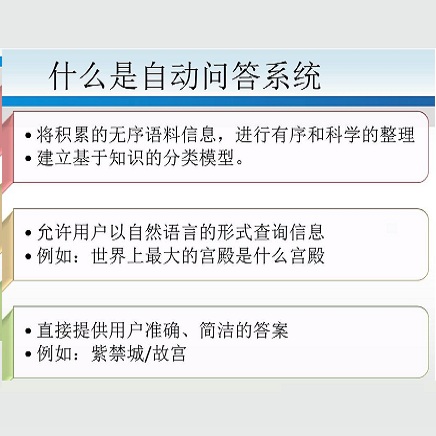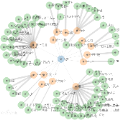Question answering over knowledge graphs (KGQA) has evolved from simple single-fact questions to complex questions that require graph traversal and aggregation. We propose a novel approach for complex KGQA that uses unsupervised message passing, which propagates confidence scores obtained by parsing an input question and matching terms in the knowledge graph to a set of possible answers. First, we identify entity, relationship, and class names mentioned in a natural language question, and map these to their counterparts in the graph. Then, the confidence scores of these mappings propagate through the graph structure to locate the answer entities. Finally, these are aggregated depending on the identified question type. This approach can be efficiently implemented as a series of sparse matrix multiplications mimicking joins over small local subgraphs. Our evaluation results show that the proposed approach outperforms the state-of-the-art on the LC-QuAD benchmark. Moreover, we show that the performance of the approach depends only on the quality of the question interpretation results, i.e., given a correct relevance score distribution, our approach always produces a correct answer ranking. Our error analysis reveals correct answers missing from the benchmark dataset and inconsistencies in the DBpedia knowledge graph. Finally, we provide a comprehensive evaluation of the proposed approach accompanied with an ablation study and an error analysis, which showcase the pitfalls for each of the question answering components in more detail.
翻译:对知识图(KGQA)的解答问题从简单的单一事实问题演变为复杂的问题,需要图表穿行和汇总。我们建议对复杂的KGQA采取新的方法,使用不受监督的信息传递方式,传播通过分析输入问题和将知识图中的条款与一套可能的答案相匹配而获得的信任分数。首先,我们确定自然语言问题中提到的实体、关系和类名,并将这些名称映射到图表中的对应方。然后,这些绘图的可信度分数通过图表结构传播,以找到答案实体。最后,这些分数根据所查明的问题类型加以汇总。这个方法可以高效地实施,作为一系列稀少的矩阵乘法乘以小的子图谱。我们的评价结果显示,拟议方法超出了LC-QOAD基准的状态。此外,我们显示,该方法的绩效仅取决于问题解释结果的质量,也就是说,根据正确的相关得分分布,我们的方法总是根据所查明的问题类型加以汇总。这个方法可以被高效地实施,作为一连带小矩阵的矩阵乘小分数的组合。我们的最后分析揭示了每个图表的错误的答案。我们在图表中,最后的成绩分析中提供了一种正确的答案。我们在图表中,在图表中,一个正确的分析中,一个正确的分析中,一个正确的分析中,一个正确的答案在正确的分析中,一个正确的答案从一个正确的分析中,从一个正确的分析中,从图表中,从一个错误分析中,从一个错误分析中,从一个错误分析中提供了一种正确的分析中,从一个正确的答案从一个错误分析中,从一个错误的答案从一个正确的答案从一个错误分析中,从一个错误的答案从一个总。

























